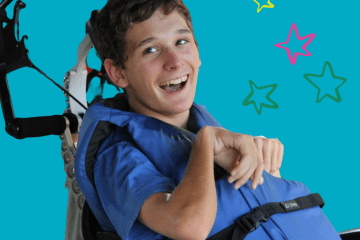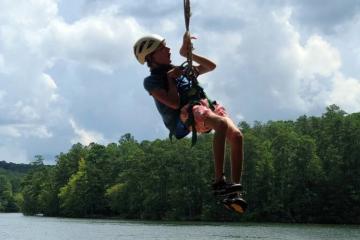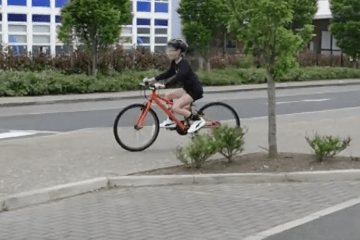Stand on Demand to Increase Participation

My hope for my son with cerebral palsy (CP) is that he is included and can participate with his peers in the community, school, or home environment—and that he can have fun doing these things. When choosing equipment or devices to enhance participation, the factors we consider include: (1) Can it be used in multiple settings? (2) Can it operate with minimal assistance? (3) Can it improve function? (4) Can he transfer in/out easily? (5) Can it be transported easily? (6) Can it be used for multiple purposes? (7) How long will it last? Sadly, however, the final and often determining factor is: (8) What is the cost and will insurance cover it?
Five years ago, my son was evaluated for and demoed a powered wheelchair standing device (PWSD). He was an appropriate candidate for the device, but was too small for it at the time. Our experiences were similar to those described by Kenyon et al.1 They explored stakeholder perspectives, which truly highlight both the benefits to participation and the realities of obtaining and owning this equipment.
The children, parents, and providers interviewed describe the personal benefits of the PWSD to participation; including standing at eye level with peers, autonomy of choosing to stand throughout the day, and the ability to do tasks that are typically performed while standing. Participants described increased confidence and self-esteem. For caregivers, the difficulties associated with transferring to a stationary stander were eliminated. The report also highlights therapists’ concerns regarding total amount of weight-bearing and that some children may not stand up all the way in the PWSD. I would contend that some use is better than none when the difficulties of transferring to a stationary stander result in nonuse or caregiver injury.
Yet, private and public insurers are not necessarily concerned about issues such as the child’s sense of belonging, or the caregiver’s ability to transfer or partial weight-bearing. Insurance funding is based on evidence that supports health benefits in the home setting, such as increased bone mineral density, range of motion, pressure relief, or digestion and elimination. Can we not argue that the physical toll CP takes on the body is progressive and that more opportunities to stand, shift weight, or just stretch out can provide benefits? Research confirming this evidence is vital for people with CP and other disabilities, as most parents would have to take out a loan to pay for such a product without aid of insurance.
Though PWSDs meet most criteria to enhance participation, it does require very thoughtful consideration to ensure that caregivers are not faced with greater burdens actually leading to decreased participation. For example, transporting a PWSD requires a modified vehicle, preferably a ramp van, which has a cost and stresses limitations of public transportation. Kenyon et al. acknowledge that the base footprint of PWSDs are larger than standard power chairs; this may require additional costly home modifications. Finally, as one participant described, PWSDs ‘break all the time.’ Can families afford to purchase a backup manual chair?
Sadly, this exercise highlights that those who could most benefit from such advanced technology may not have the opportunity or the resources from the outset.
I am hopeful that the perspectives revealed by Kenyon et al. will spark interest and further studies on the potential participation benefits of PWSD for pediatric wheelchair users with varying diagnoses (and influence manufacturers to develop PWSD with small footprints and seating systems). I firmly believe that if we, caregivers and clinicians, research products that focus on maximizing participation, then the objective of improving body structure and function will follow. This will serve to generate clear data that can support insurance funding for such devices. We look forward to my son’s next wheelchair evaluation with anticipation that a PWSD is a possibility.
REFERENCE
Retrieved From: Lyman, J. (2021), Parent perspective on powered wheelchair standing devices. Dev Med Child Neurol, 63: 893-893. https://doi.org/10.1111/dmcn.14862





